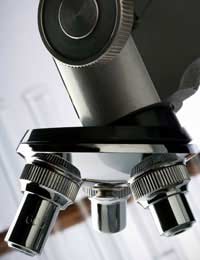Using Biochips Instead of Animals for Testing

Given that the cosmetics sector in Europe will experience a ban on animal testing to be phased in by 2009, new ways of testing cosmetics will become even more important. Not only that, but new approaches to testing can also mean reduced animal testing for medical purposes.
The most recent development is an exciting one because it can allow a very quick analysis to provide assurance that a cosmetic product is safe for human use. A biochip is made up of more than one thousand human cell cultures. Suspended in a special three-dimensional gel and utilised on a slide to be viewed under the microscope, an individual cell culture can investigate if a specific chemical is toxic to humans. With the biochip, researchers can use this technology to find out if certain chemicals irritate the skin or cause toxicity in humans.
Extending the Uses of a Biochip
Even more exciting news about the biochip is that scientists can add in other kinds of cells. In this way, a researcher could add in a lung cell, for instance, which would then check if the chemical is toxic to lungs. This new technology now allows for scientists to assess the toxicity of a chemical on multiple organs, rather than just skin alone.With important legislation that mandates the use of toxicity testing for drugs and metabolites in the chemical industry, the biochip will allow drug companies to quickly analyse chemicals and determine how their metabolites affect human cells. The biochip also carries other benefits such as a reasonable cost, rapid output and of course, it does not require the use of animals for testing. By addressing the issues of how a drug affects different body cells as well as how toxicity may occur once the human body metabolises the drug, the biochip is a promising alternative to animal testing.
Screening for Drug Effectiveness
Perhaps the most beneficial aspect of a biochip is that it could eventually allow people to have a drug assessed against their precise genome prior to actually ingesting the drug. This means that if it became affordable to sequence the genes of every person, we could assess how a person will react to a certain drug. In this sense, we would be screening a drug before it is actually provided for a person, which would allow medical professionals to find the safest and most effective dose for that particular individual. While these biochips primarily look for cell death or the inhibition of cell growth, it is hoped that they may eventually test for allergic reactions and other issues relating to the use of a chemical.Positive Steps to Reduce Animal Testing
While this new biochip is not yet a complete replacement for animal testing, it is an exciting and positive step in the right direction for the chemical industry and pharmaceuticals. Ultimately, it pulls us a bit closer to finding a way to replace animals in laboratory testing. We would be able to use this technology to assess the safety of a new product and make predictions about chemical toxicity for different patients. The result is good news for both humans and perhaps more so, the laboratory animals that are used for testing purposes.- Animal Rights Activists Targeting Scientists
- Scientists Against Animal Testing
- Pet Foods and Animal Testing
- Changing British Attitudes on Animal Testing
- Replacing Animal Tests With Stem Cells
- Suffering of Lab Animal Technicians
- Rapid Information Sharing to Reduce Animal Tests
- Human Infections from Animal Testing Labs
- Improving Transparency in British Animal Testing


Re: Food Production and Animal Testing
You would have to grow the food yourself and not use pesticides. Industrially farmed veg is sprayed with pesticides which…
Re: Using Animals for Testing: Pros Versus Cons
Do they animal test on chimpanzees cause DNA?
Re: Who Performs Animal Testing?
Animal Testing and Experimenting is most Barbaric. 96% of all the results fail, and can't be used on Humans. A hundred and fifteen…
Re: Using Animals for Testing: Pros Versus Cons
While some animal testing is not ok you also have to look at the bright side of this. Because of animal…
Re: Biomedical Research and Animal Testing
Animals don’t have much of a life than humans they also have a shorter time span than humans
Re: What Happens to Animals After Testing?
In 2004, the FDA estimated that 92 percent of drugs that pass preclinical tests, including “pivotal” animal tests,…
Re: What Happens to Animals After Testing?
I entirely disagree with all animal experiments. They are archaic and hideously cruel. They cannot express pain like…
Re: Who Performs Animal Testing?
In regards to animal testing by the MoD medical equipment mainly field dressings and celox gauze is tested on live animals that…
Re: What Happens to Animals After Testing?
Is animal testing inhumane and cruel? Of course. But for example, let's say that someone has diabetes and the only…
Re: Animal Testing in the United States
I have degrees in chemistry and physics and have done cancer research before in the U.S. but stopped because drugs…